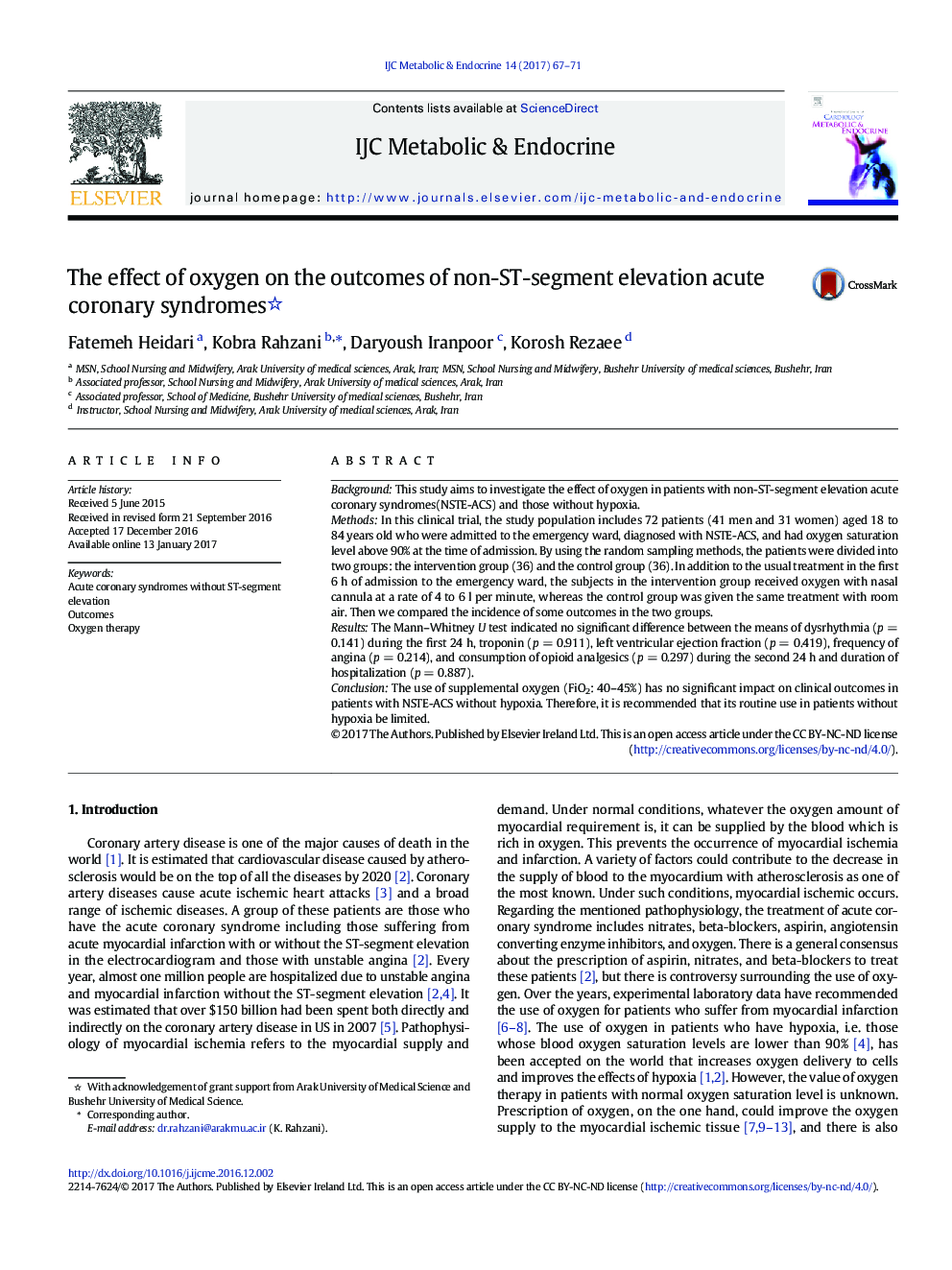| Article ID | Journal | Published Year | Pages | File Type |
|---|---|---|---|---|
| 5603701 | IJC Metabolic & Endocrine | 2017 | 5 Pages |
BackgroundThis study aims to investigate the effect of oxygen in patients with non-ST-segment elevation acute coronary syndromes(NSTE-ACS) and those without hypoxia.MethodsIn this clinical trial, the study population includes 72 patients (41 men and 31 women) aged 18 to 84 years old who were admitted to the emergency ward, diagnosed with NSTE-ACS, and had oxygen saturation level above 90% at the time of admission. By using the random sampling methods, the patients were divided into two groups: the intervention group (36) and the control group (36). In addition to the usual treatment in the first 6 h of admission to the emergency ward, the subjects in the intervention group received oxygen with nasal cannula at a rate of 4 to 6 l per minute, whereas the control group was given the same treatment with room air. Then we compared the incidence of some outcomes in the two groups.ResultsThe Mann-Whitney U test indicated no significant difference between the means of dysrhythmia (p = 0.141) during the first 24 h, troponin (p = 0.911), left ventricular ejection fraction (p = 0.419), frequency of angina (p = 0.214), and consumption of opioid analgesics (p = 0.297) during the second 24 h and duration of hospitalization (p = 0.887).ConclusionThe use of supplemental oxygen (FiO2: 40-45%) has no significant impact on clinical outcomes in patients with NSTE-ACS without hypoxia. Therefore, it is recommended that its routine use in patients without hypoxia be limited.
